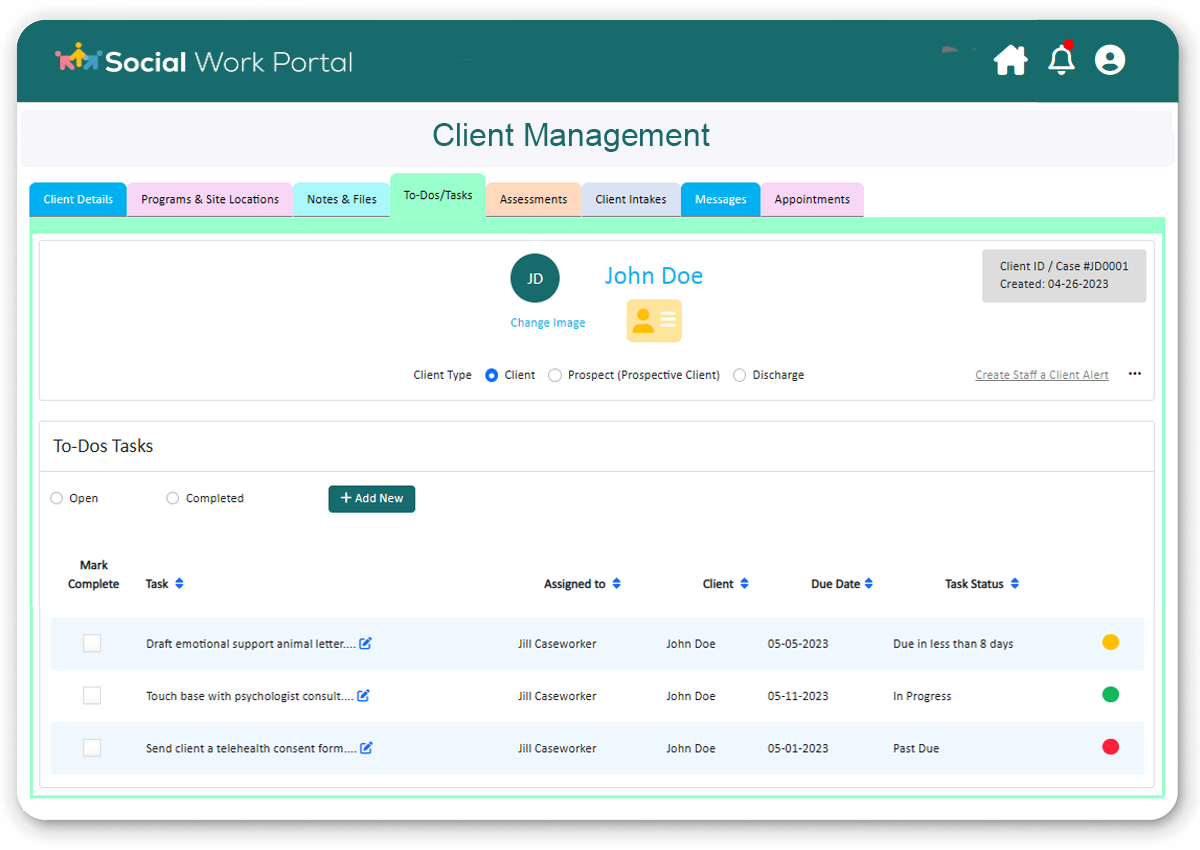A Simple, but Comprehensive Guide to Launching and Getting Funding for Your Nonprofit
Introduction
This article is your comprehensive guide to understanding how to create a nonprofit and key mistakes you should avoid, how to get funding for your organization when you’ve registered to become a nonprofit, how to navigate the registration process, how and why you need to build a governance team, and access to a case management software for your non-profit, and many more.
By following these steps, you’ll learn how to establish a nonprofit and position your organization for long-term success.
Starting a nonprofit organization is a rewarding journey that allows you to create lasting impact in your community or beyond. Many aspiring changemakers often ask, “How do you set up a non profit?” or wonder about how to register a nonprofit organization. The process may seem complex, but it’s entirely achievable with the right guidance.
Quick FAQ: Can a nonprofit make a profit?
Yes, but all profits must be reinvested into the organization’s mission. This distinction is critical for those asking “How to create a nonprofit?”
Table of Contents
- What is a Nonprofit Organization?
- The Foundation of a Successful Nonprofit
- Building Your Non-Profit Team
- Best Software for Nonprofits
- How to Register a Nonprofit Organization in 7 Steps
- Why Register a Nonprofit?
- Non Profit Compliance and Legal Requirements
- Why Community Engagement is very Important
- Key Mistakes to Avoid
- Transform Your Nonprofit with Case Management Software
- How to Fund Your Non-profit Organization
- Conclusion
Quick FAQ: How much does it cost to register and set up a nonprofit?
Costs include state filing fees and IRS Form 1023 (or 1023-EZ) fees, which range from $275 to $600. These expenses are important for anyone researching how to create a not for profit organization.
What is a Nonprofit Organization?
A nonprofit organization serves a cause, not profits. The goal is to create impact through education, advocacy, or community programs. If you’re researching how to register a non profit organization or how to become a not for profit organization, it’s important to understand that nonprofits reinvest their revenue into their mission, instead of distributing it to owners or shareholders.
 Registering a nonprofit allows you to access benefits like tax exemption, legal protections, and increased credibility. It’s a critical step for anyone exploring how to become a nonprofit organization or how to establish a nonprofit.
Registering a nonprofit allows you to access benefits like tax exemption, legal protections, and increased credibility. It’s a critical step for anyone exploring how to become a nonprofit organization or how to establish a nonprofit.
The Foundation of a Successful Nonprofit
A nonprofit’s success begins with a well-defined purpose. Before you dive into the logistics of how to create a nonprofit, ask yourself:
- What is the core mission of your organization?
- Who will benefit from your work?
- How will your nonprofit address gaps or challenges?
A clear purpose not only motivates your team but also attracts donors and supporters who align with your goals. It’s essential for anyone asking “How do you set up a non profit?”
Quick FAQ: How long does it take to register a nonprofit?
The timeline depends on your state and the IRS review process, typically taking 3-6 months or more. Understanding this is vital when exploring how to establish a nonprofit.
Building Your Non-Profit Team
No nonprofit can thrive without a committed team. When setting up a nonprofit, focus on assembling a diverse group of individuals who bring unique skills and perspectives. This team will play a critical role in governance, fundraising, and outreach.
- Board Members: Your board will oversee the nonprofit’s operations and provide strategic guidance.
- Volunteers: Dedicated volunteers are vital for day-to-day tasks and community engagement.
- Advisors: Experts in fields like finance, law, or marketing can provide invaluable insights.
If you’re researching how to set up a not for profit organization, don’t underestimate the importance of strong leadership and collaboration.
Best Software for Nonprofits
Do you wish you could spend more time with clients, events, and running your non-profit organization and less time on spreadsheets and administrative work? The Case Management Hub for non-profits is your answer! This simple-to-learn nonprofit case management system “just makes sense” and keeps all your nonprofit notes, intakes, reporting, assessments, appointments, and more organized and accessible.
Reduce your reliance on outdated processes, automate your non-profit organization’s reporting, and enjoy a more efficient non profit organization. Try it for free, no credit card needed!
Read more and start a free trial now.
How to Register a Nonprofit Organization in 7 Steps
- Define Your Mission and Vision: The first step in learning how to create a nonprofit is to define your mission. Your mission statement should clearly articulate:
- What problems are you solving?
- Who will benefit?
- How will your nonprofit make an impact?
- Choose a Name for Your Nonprofit Organization: Your nonprofit’s name should align with your mission and resonate with your target audience. Ensure your chosen name is unique and available in your state’s business registry. This step is essential for those asking “How do I set up a non profit?”
- Develop a Nonprofit Business Plan: A detailed business plan helps you secure funding and provides a roadmap for your nonprofit. This is a crucial step in understanding how to establish a nonprofit and ensuring sustainability. In addition, having a detailed business plan outlines your goals, services, and funding strategies. It is a vital tool for securing grants and engaging stakeholders. A solid plan is critical when understanding how to set up a not for profit organization.
- Incorporate Your Nonprofit: File Articles of Incorporation with your state. Incorporation legally establishes your nonprofit and is a must for anyone asking how to register a non profit organization.
- Apply for 501(c)(3) Tax-Exempt Status: Submit IRS Form 1023 or 1023-EZ to gain tax-exempt status to apply for a 501(c)(3) tax exemption status. This step is crucial for those learning how to become a nonprofit for the first time, and ensuring eligibility for federal tax exemptions.
- Establish Governance and Draft Bylaws: Governance includes forming a board of directors and creating bylaws to guide decision-making. Those researching how to create a nonprofit will find this step integral to effective governance for their organization.
- Comply with State and Local Regulations: Research state-specific requirements, such as charitable solicitation permits or local business licenses. Compliance ensures your nonprofit remains in good standing.
Quick FAQ: What is the difference between a nonprofit and a not-for-profit organization?
Nonprofits focus on public benefit causes, while not-for-profits may serve specific member interests. Both require similar steps when exploring how to create a not for profit organization or how to register a nonprofit organization.
Why Register a Nonprofit?
Registering as a nonprofit offers a host of advantages:
- Tax Benefits: Securing 501(c)(3) tax-exempt status can save your organization significant money.
- Credibility: Official registration boosts trust with donors, sponsors, and the public.
- Funding Opportunities: Many grants and sponsorships are only available to registered nonprofits.
- Legal Protections: Incorporation protects board members and founders from personal liability, an essential consideration for anyone researching how to create a nonprofit or how to register a non profit organization.
Non Profit Compliance and Legal Requirements
A significant aspect of learning how to create a not for profit organization involves meeting legal and regulatory standards. Each state has unique requirements, but key compliance areas include:
- Filing Articles of Incorporation.
- Applying for 501(c)(3) tax-exempt status with the IRS.
- Maintaining proper financial records and annual filings.
By adhering to these requirements, you’ll not only stay in good standing but also build credibility with donors and stakeholders.
Why Community Engagement is very Important
For a nonprofit to thrive, it must connect deeply with the community it serves. Develop programs, events, and campaigns that align with your mission and resonate with your audience.
Effective communication is crucial. When building awareness, tailor your messaging to explain how your nonprofit benefits the community. This approach is particularly important for those exploring how to create a nonprofit or how do you become a nonprofit organization.
Quick FAQ: Do I need a lawyer to register my nonprofit?
While not required, consulting an attorney experienced in nonprofit law can help you avoid mistakes during the incorporation and tax-exemption process.
Key Mistakes to Avoid
Running a nonprofit comes with unique challenges, and avoiding common pitfalls is essential for long-term success. Here are some critical mistakes nonprofits often make, along with helpful resources to guide you in the right direction:
1. Skipping the Business Plan
Without a solid business plan, your nonprofit may struggle to define its mission, attract funding, and measure success. A comprehensive plan provides the direction needed to achieve your goals.
- How to Write a Nonprofit Business Plan: A step-by-step guide to creating a plan tailored to your nonprofit.
- Sample Nonprofit Business Plans: Access templates to help you get started.
2. Overlooking State Regulations
Nonprofit laws and registration requirements vary by state. Failing to comply can lead to penalties or the loss of your nonprofit status.
- State Nonprofit Compliance Guide: Explore the specific regulations in your state.
- IRS State Requirements for Exempt Organizations: Find links to state-specific nonprofit resources.

3. Neglecting Governance
An engaged, knowledgeable board of directors is vital for effective oversight and decision-making. Nonprofits that neglect governance risk poor leadership and mismanagement.
- Nonprofit Board Basics: Learn about board roles, responsibilities, and best practices.
- How to Build a Strong Nonprofit Board: Tips for recruiting and developing board members.
4. Ignoring Financial Transparency
Transparency in your nonprofit’s finances is key to building trust with donors, securing grants, and maintaining compliance with IRS regulations.
- Nonprofit Accounting Basics: Resources for understanding nonprofit financial practices.
- Charity Navigator: Financial Transparency Checklist: Ensure your nonprofit meets transparency standards.
- IRS Form 990 Filing Requirements: Stay compliant with annual reporting obligations.
5. Underestimating the Importance of Marketing
Many nonprofits focus so heavily on programs that they neglect to promote their mission effectively. Without marketing, it can be difficult to reach potential donors and beneficiaries.
- Nonprofit Marketing Best Practices: Learn how to create campaigns that resonate.
- Free Marketing Tools for Nonprofits: Access affordable tools to boost visibility.
6. Failing to Diversify Funding
Relying on a single funding source can leave your nonprofit vulnerable. It’s important to establish a diverse range of revenue streams.
- Diversifying Nonprofit Funding: Strategies to avoid over-reliance on one source.
- Crowdfunding Tips for Nonprofits: Unlock new funding opportunities online.
7. Overlooking Technology
Neglecting to invest in technology can slow down operations and limit your nonprofit’s impact.
- Top Nonprofit Software Tools: Discover tools to streamline operations.
- Nonprofit Technology Trends: Stay updated on the latest innovations in the nonprofit sector.
By avoiding these common mistakes and using the linked resources to address gaps, your nonprofit can operate more effectively, attract support, and make a greater impact.
Quick FAQ: Do nonprofits pay taxes?
Once registered as a 501(c)(3), nonprofits are exempt from federal income taxes. This step is crucial for those asking “How to register a nonprofit organization?”
Transform Your Nonprofit with Case Management Software
Are you tired of spending countless hours juggling spreadsheets and manual administrative tasks when you could be focusing on your clients, events, and the mission of your nonprofit? The Case Management Hub for Nonprofits is here to revolutionize the way you work!
This intuitive, easy-to-learn nonprofit case management system is designed with your organization’s needs in mind. It keeps all your essential data—such as client notes, intakes, reporting, assessments, appointments, and more—organized, accessible, and secure. With its user-friendly interface and powerful features, it’s a solution that “just makes sense” for nonprofits of all sizes.
Read more and start a free trial now.
How to Fund Your Non-profit Organization
Funding is a critical element of sustaining your nonprofit and achieving your mission. Securing financial resources can feel overwhelming, but with the right strategies and tools, you can build a robust funding pipeline. Consider these key approaches to funding your nonprofit:
1. Grants
Grants are an excellent source of funding for nonprofits. Many private foundations, corporations, and government agencies offer grants tailored to specific causes or programs.
- Foundation Directory Online: Search for grantmakers who align with your mission.
- Grants.gov: Access a database of federal grants for various nonprofit initiatives.
- Grant Writing Basics: Learn how to craft compelling grant proposals.
2. Fundraising Campaigns
Engage your community and supporters through targeted fundraising campaigns. Leverage both traditional methods and digital platforms to maximize reach.
- GoFundMe Charity: Create online campaigns to reach a broad audience.
- Network for Good: Access tools and tips to manage effective fundraising efforts.
- How to Plan a Successful Fundraiser: Get practical guidance on organizing impactful events.
3. Corporate Sponsorships
Partnering with businesses can provide significant financial and in-kind support. Many companies have corporate social responsibility (CSR) programs that align with nonprofit missions.
- How to Approach Corporate Sponsors: Learn how to identify and pitch to potential sponsors.
- CSR Hub: Discover companies committed to social impact.
4. Individual Donors
Cultivating relationships with individual donors can create a stable funding base.
- Bloomerang Donor Retention Guide: Discover how to retain and engage donors effectively.
- The Ultimate Guide to Nonprofit Email Marketing: Use email campaigns to stay connected with supporters.
5. Nonprofit Loans and Crowdfunding
For immediate financial needs or specific projects, consider nonprofit loans or crowdfunding platforms.
- Kiva for Nonprofits: Explore small loans to fund programs or initiatives.
- Classy Crowdfunding Platform: Launch focused crowdfunding campaigns to engage donors.
6. Diversify Revenue Streams
Explore alternative income sources, such as fee-for-service programs, merchandise sales, or social enterprises.
- Nonprofit Revenue Strategies: Learn about diversifying your income sources.
- Social Enterprise Examples: Get inspired by successful nonprofit-led businesses.
7. Build Strong Donor Relationships
Strengthening relationships with your existing donors is just as important as attracting new ones. Use CRM software to track donor interactions and personalize your outreach.
- Best CRM Tools for Nonprofits: Find the right CRM to manage donor relationships.
- Donor Thank You Letter Tips: Show appreciation and build loyalty.
By exploring these funding approaches and leveraging the resources above, you can ensure the sustainability of your nonprofit while staying focused on making a meaningful impact.

Do you have any questions or feedback about this non-profit guide? If so, contact us. We’ll love to hear from you.
Conclusion: Your Path to Impact Starts Now
Registering a nonprofit organization is a significant milestone that turns your vision into reality. By focusing on purpose, building a strong team, securing funding, and engaging with your community, you’ll be well-equipped to make a difference.
If you’ve been asking “How do I set up a non profit?” or researching how to set up a not for profit organization, this guide serves as your launchpad.
Take the first step today and unlock the power of your nonprofit to create meaningful change.
Case Management Software for Running a Nonprofit
Are you wondering how to run a nonprofit organization with clients, intakes, progress notes, and general case management? The Case Management Hub has everything you need!
From program and client management to paperless intakes and analytics, our software can help in running a non-profit organization smoothly and efficiently.
Learn more and start a free trial.
Note: Content on this website (socialworkportal.com) is copyrighted and protected under applicable copyright laws. Unauthorized reproduction, distribution, or use of any content from the website, without explicit written permission, is strictly prohibited. Read: Terms of Use.
Social Work Portal Disclaimer: Social Work Portal is not a social work agency and we do not refer social workers. This web site is provided for educational and informational purposes only and does not constitute providing medical advice or professional social and healthcare services. The information provided should not be used for diagnosing or treating a health problem or disease, and those seeking personal medical advice should consult with ... Read our full disclaimer here: Social Work Portal Disclaimer.

Can a nonprofit pay its staff?
Yes, nonprofits can compensate staff members, but salaries must align with the organization’s mission and budget. This is an important consideration for those learning how to become a nonprofit.
How do I apply for 501(c)(3) status?
You’ll need to submit IRS Form 1023 or Form 1023-EZ. This step is essential for tax exemption, a key part of understanding how to register a nonprofit organization.
What are non-profit bylaws, and why do I need them?
Bylaws are the rules that govern your nonprofit’s operations. They’re required for incorporation and help establish structure, especially when setting up how to create a nonprofit.
How can I find grants for my nonprofit?
Research local, national, and industry-specific foundations that offer grants. Many resources are available online for those exploring how to set up a not for profit organization.
Do I need to renew my nonprofit status annually?
Yes, most states require annual filings to maintain good standing. This includes submitting tax forms.
Image sources: Stock.adobe.com







